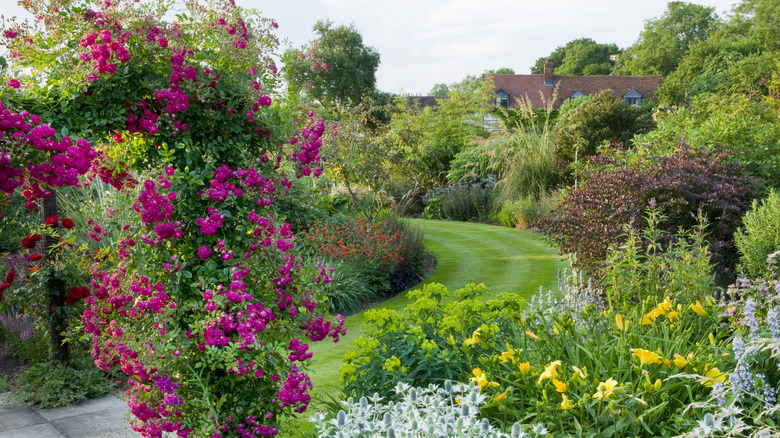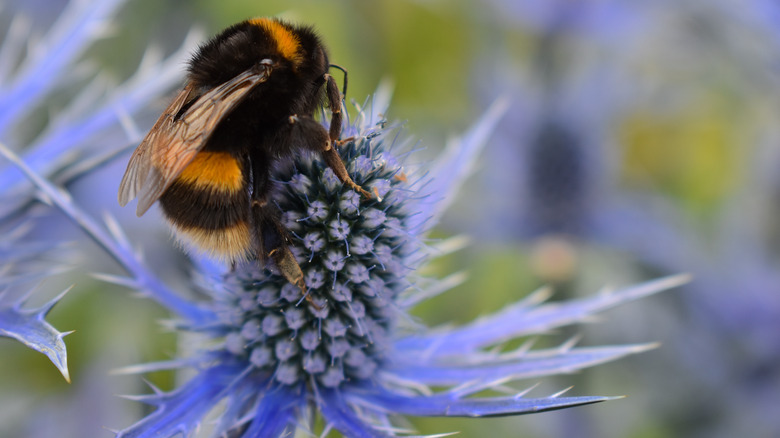This Gorgeous Spiky Blue Plant Is The Perfect Addition To Any Border Garden
Blue is a somewhat unusual color to find in gardens, and finding a blue plant that also adds an unusual texture to your garden is even more special. A blue plant that is also drought tolerant and a pollinator magnet is a true treasure. Sea holly (Eryngium planum) has all these features and more, making it a must-have for border gardens.
While sea holly isn't native to North America, instead hailing from central Europe and western Asia, it is not prone to becoming invasive and grows well in USDA zones 5 through 9, with some cultivars even thriving down to zone 3. In addition to its pollinator appeal and drought tolerance, it's also tolerant of salt. Its downsides are its thorns and spikes and the awful smell the plant can cause, which help give it the advantage of being deer- and rabbit-resistant, though you may want to avoid planting it too close to paths and sitting areas.
Growing and caring for sea holly
Sea hollies can be purchased either as seeds or as live plants; with many cultivars available to choose from, you're sure to find one that's perfect for your yard. Unlike many perennials, which can take three years to mature, some sea holly varieties can flower even in their first year. While sea holly tends to grow around 3 feet tall and 2 feet wide, more compact cultivars like 'Blue Hobbit' seldom grow past 12 inches, making them ideal for smaller spaces. Once you've picked the perfect sea holly variety you just need to find a sunny spot to plant it, as sea holly's blue color becomes more vibrant the more sun it receives.
Don't worry too much about your sea holly's soil, as it actually thrives in poor and sandy soils as long as they are well-draining. However, do be aware when finding a spot for your sea holly that it doesn't tend to transplant well, so you won't be able to move it easily once it's established in a location. Sea holly is also an effortlessly self-seeding flower, so be sure to deadhead if you aren't trying to grow a garden full of sea holly.

